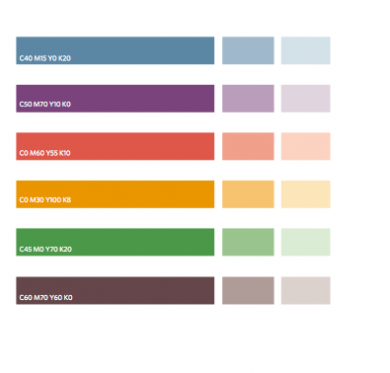Updated Saturday, Feb. 28, at 7:41 pm EST


Show Me the Money: Newsday announces plan to charge for web content
This morning at breakfast, at Muscat’s Shangri La Resort & Spa, I ran into my Austrian friend Dr. Horst Pirker, CEO of Styria Medien AG,one of Europe’s most successful and aggressive media companies, with which I have worked on a variety of projects (Kleine Zeitung, Wirtschafts Blatt, 24 Sata, Die Presse), So, my first thought is that Dr. Pierker is here to purchase one of the local newspaper operations.
“Oh, no,” Pirker says with a smile. “I am here with my wife to celebrate our 25th wedding anniversary.”
Congratulations to the Pirkers. Soon, the conversation leads to, what else, “newspapers”.
When I arrived for breakfast I had just read the sad news about the Rocky Mountain News of Denver shutting down operations this Friday. I know many friends who work there. Top people. Talent beyond description. I can only imagine what is going thru their minds and their hearts.
E.W. Scripps, which owns the newspaper, announced Thursday that it had failed to find a buyer for the troubled daily. Scripps’s chief executive, Rich Boehne, said in a statement that The Rocky was “a victim of changing times in our industry and huge economic challenges.” Scripps said the newspaper lost $16 million last year.
A victim of changing times.
Hmmmmmmmmmm, in hushed tones.
Easily understood. All one has to do is tune in to CNN or read the business pages, and it is a parade of victims of changing times: from banks to automobile makers to real estate developers. By the way, before we get over the shock of the closing of The Rocky, as it is affectionately called in Denver, let’s prepare ourselves for what is to come. Hearst, for example, said last week that it was considering selling or closing the San Francisco Chronicle, and it plans to close The Seattle Post-Intelligencer if it finds no buyer for that paper. Get out your black suits, as it is funeral season for a lot of these newspapers. The sad thing is, it doesn’t have to be.
For the record, The Rocky has about 230 reporters, editors and other employees in its newsroom. It will close just two months short of its 150th anniversary.
“Where are we going in this business, Mario?” my friend Dr. Pirker asked as we stopped over the cereal section of the breakfast buffet at the Shangri La.
“I am not one to lament, Horst, so I think that we need to rethink how we do things, redraw the business model, pay attention to what we do online, and start charging for it. And, yes, the printed product in many markets will survive, but it may be a distinctly unique product, more liketly to appear on weekends, NOT daily.”
We discussed local coverage and its importance. I am convinced that people will pay for online local news, and this is the area where newspapers need to apply their thinking and skills in these changing times. Rather than become victims, they need to seize the occasion, concentrate on one of their best assets: local reporting, local knowledge, local service, local guides.
And start charging for that, and for other multiple services that online can produce at the local level, which many newspapers have not even started to think about.
That brings us to the next topic of the day, and one that inspires optimism.
Newsday to start charging for online content
Earlier this week in our blog we urged newspaper companies to start charging for their content online. At the time, I wrote:
This is an opportune time for newspapers to revisit the issue of charging for the information they offer.
So I am delighted to read that Newsday, the Long Island, New York, daily (one we redesigned 10 years ago) has announced to go the “pay for online news” route.
The announcement, which coincides with the sad news about The Rocky, was made Thursday during a conference call in which Cablevision, the newspaper’s owner, also announced it would write down the value of its $650 million acquisition of the newspaper by $402 million.
“Our goal was, and is, to use our electronic network assets and subscriber relationships to transform the way news is distributed,” said Tom Rutledge, Cablevision’s chief operating officer, according to a Reuters report on the call. “We plan to end distribution of free Web content and to make our news gathering capabilities service our customers.”
True, this plan would go against the trend of newspapers abandoning the pay-for-content model. Among the country’s largest newspapers, only The Wall Street Journal has managed to continue charging online subscription fees. The New York Times abandoned a two-year experiment with the Web-subscription model in 2007,
But, as we said earlier in this blog, the pay for content model needs to be revisited with new energy and creative models. Once a handful of newspapers, such as Newsday, do it, it is likely that more in the industry will go that route. I am certain that this will work. If nothing else, it is worth trying.
In addition, it will force newspaper publishers to turn their attention to online——an often ignored and abandoned part of their operations——and concentrate on the possibilities that this medium offers for information gatherers. Not to mention that online news consumption is not likely to decline, nor to disappear. So, rather than lament, we in this industry need to start showing pride for what we do, and seek the best models to continue dispensing to an audience, while making a profit.
It can be done. This forum is open to dialog about the subject. I am hoping to read about dozens of regional newspapers worldwide that decide to charge for their online content.
San Francisco Chronicle: missed opportunities?
This you will find relevant to our discussion here. Mark Potts, who describes himself as a consultant and entrepeneur, writes about the San Francisco Chronicle’s financial woes, and why it is, as he writes, “on the brink of extinction.”
Potts’ theory: the Chronicle, like many other American dailies, has ignored its website. In the case of the Chronicle, however, it is inexcusable, since, as Potts points out, the models of how to use the medium of the Internet to do great things and to provide service to users, was just around the neighborhood, in Sillicon Valley and beyond.
Here is part of the Potts’ blog commentary:
If you want some idea why the San Francisco Chronicle is on the brink of extinction, just take a look at its Web site, SFGate.
It’s a perfectly adequate newspaper Web site–and that’s the problem. Newspapers have been fumbling their Web sites for years, and that’s one reason why the future for the Chronicle, and many other large papers, may be bleak. They’ve failed to concentrate on building great, useful Web sites rather than merely adequate ones. Satisfied with pasting newspaper headlines and stories on a screen and trying to convince print display advertisers to run online banners, the Chronicle and other papers have been left behind by smarter thinking on the Web. Their cluttered designs are hard to navigate; many still labor under the misconception that readers come to their sites looking for foreign and national headlines rather than focusing on local news; and they’ve failed utterly to keep up with the latest trends in online advertising and content delivery.
I have read this blog several times, and I hope to write more about it.
At a time like this, missed opportunities can have tragic consequences for newspapers.
– USA: Death of a Chronicle Foretold
http://recoveringjournalist.typepad.com/recovering_journalist/2009/02/death-of-a-chronicle-foretold.html
–
On Facebook: Save The San Francisco Chronicle
http://www.facebook.com/group.php?gid=57294132095&ref=share
Another view: is the death of newspapers exaggerated?
No Iceberg—Separating Truth from Fiction About Newspapers In This Recession by Earl J. Wilkinson
Wilkinson is executive director and CEO of the International Newsmedia Marketing Association (INMA), a non-profit organisation with more than 1,200 members in 82 countries worldwide
A highlight of Wilkinson’s report:
In the United States, the economics of a labour-intensive metropolitan daily reliant on print classified advertising and distributed to a vast exurban geography will force “second newspapers” in local markets to close. Meanwhile, newspapers that chose not to slim down operations in good times, through inaction or union intransigence, may consider closing instead of confronting the disorientation of cultural vertigo—peering over the cliff and cutting staff by half at one time.Let’s be clear here. This means a U.S. metropolitan market is not big enough to support more than one kind of 20th century-style publishing behemoth—a peculiar entity on the world stage that falls squarely in the “more affected” category. Most markets in the world can handle several such entities. In the United States, smaller, nimbler digital news operations will likely emerge with reverse publishing on profitable days the likely model that fits the market.
For Wilkinson’s entire report, which can be downloaded as pdf, go here:
http://www.inma.org/2009-inma-iceberg.cfm
Color palette in the desert

Our first draft of a color palette for the Arabic-language newspaper, Al-Shabiba, is done, inspired by the colors of the region, earthtones, bright orange, but also subtle pastel hues. Dear colleague, Dr. Pegie Stark Adam, an internationally recognized expert on color use in the media, was kind enough to help our Garcia Media art director, Jan Kny, and me, from her studio in Ottawa, Canada. I sent Pegie pictures of the dark sand of Oman, and of the delicious dates that are such a snack treat here. She gave us the mocha color as one that would be helpful to our palette. Here is the palette!
The sand on the Gulf of Oman is a mocha color.
![]()
TheMarioBlog: Information in Newspapers Has a Value: Start Charging for It Online
https://www.garciamedia.com/blog/articles/information_in_newspapers_has_a_value_start_charging_for_it_online
Rocky Mountain News is shutting down
http://dealbook.blogs.nytimes.com/2009/02/26/rocky-mountain-news-to-shut-down/?scp=2&sq=Rocky%20Mountain%20News&st=cse
Newsday plans to charge for online news
http://www.reuters.com/article/marketsNews/idINN2625853520090226?rpc=44
Why the Rocky Closed & What its End Says About the Business’s Future
Nice piece by Rick Edmonds, media analyst at The Poynter Institute for Media Studies about the Rocky Mountain News.
http://poynter.org/column.asp?id=123&aid=159230

To read TheRodrigoFino blog, in Spanish, go:
https://garciamedia.com/latinamerica/blog/
TheMarioBlog posting #202